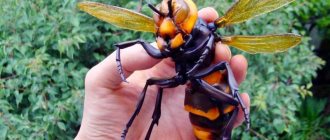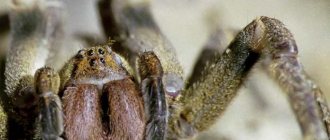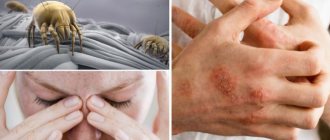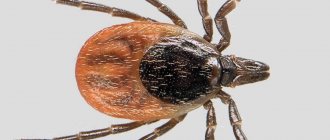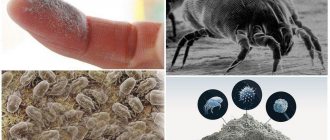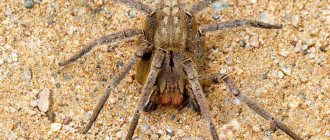About 50 thousand species of ticks are described in the scientific literature. They belong to the class of arachnids and are distributed throughout the world. Blood-sucking members of the genus are capable of transmitting dangerous diseases. Individuals that feed on dead organic matter often cause an allergic reaction and itching on the body. The tick size ranges from a few millimeters to 3 cm; females are always larger than males. The larvae differ in appearance by the number of legs - not 4 pairs, but 6, and the minimum body size.
Ticks
Ticks are a subclass of the order Arachnids, as evidenced by their appearance and structure.
Tick body structure
In the subclass, scientists count more than 48 thousand species and their number is constantly growing. These arachnids have effectively mastered the upper soil layers and mostly feed on dead organic matter, improving the fertility of the soils in which they live. Despite the fact that horror films show huge animals that can kill a person, in reality the maximum size of this arthropod rarely exceeds 3 cm.
All ticks have an incomplete development cycle, in which there is no larval stage. Young nymphs molt several times, but constantly retain the appearance of adults, gradually increasing in size.
Tick map of Russia
According to Rospotrebnadzor, in the Russian Federation, residents of 48 regions are in a potentially dangerous zone, where there is a high probability of becoming infected with viral encephalitis from ticks. Among them are the Republic of Altai and Crimea, regions of the North-Western and Central districts, Karelia, Transbaikalia, Bashkiria, Volga region, Siberia, Primorsky Krai, Leningrad and Kaliningrad regions. These territories are considered endemic, as Galina Karganova, Doctor of Biological Sciences, explains, in these territories there is a constant circulation of the virus: ticks infect animals, and they in turn infect other ticks with the virus. Therefore, in these areas, cases of human illness from arthropod bites have been recorded for several years. Residents who are at greater risk of contracting tick-borne borreliosis (Lyme disease) are:
- Moscow and Moscow region,
- Krasnodar Territory and Tatarstan,
- Tyva and Udmurtia,
- Trans-Baikal Territory and St. Petersburg,
- Lipetsk, Samara, Kaluga, Irkutsk, Belgorod, Vologda, Tyumen and Sverdlovsk regions.
In the valleys of the Crimea and the Caucasus, in the Volgograd and Rostov regions, in the Stavropol Territory and the Astrakhan Region, when going outdoors, it is worth remembering the risk of contracting hemorrhagic fever through ticks. Sometimes specialists record so-called pseudofoci in places where ticks carrying the infection are not usually observed. Experts associate the formation of such centers with the movement of people who, having become infected in the territory where blood-sucking ticks live, return to areas where they are absent, already carrying the virus. Since ticks are not adapted to life in a zone of low atmospheric pressure, they can very rarely be found at altitudes above 1000 meters above sea level, and intolerance to harsh climates makes the territory of Yakutia, the Yamalo-Nenets District, Vorkuta, Murmansk, Norilsk and other places located in the Arctic.
The most bloodthirsty types of ticks
Depending on the structure and lifestyle, two large groups of ticks are distinguished:
- Acariformes or acarinae. These are small arthropods with saprophytic nutrition, whose food is ready-made dead organic matter. This group includes the smallest ticks, as well as a number of parasitic species that can cause parasitic diseases in humans and animals. These are, for example, scabies, feather bugs, dust bugs, demodex (causative agent of the glandular fungus), red beetles. This also includes granary or grain mites that live in places where grain, mushrooms, dried fruits, and bulbs are stored and can cause considerable damage to them if they reproduce unregulatedly. Among acarinae there are also species for which the norm is to hunt their own kind. They live in barn mite habitats, feeding on small insects, eggs or nymphs of their larger relatives. Red beetles are arachnids that feed on human blood and are capable of transmitting such a serious disease as tsutsugamushi, the causative agent of which is Far Eastern rickettsia.
- Parasitiformes. These include Argasidae, Ixodidae and Gamasidae predatory ticks. These are large ticks that can live in burrows or hunt from tall grass or bushes (pasture). The females of these ticks are much larger than the males; when they drink blood, they can increase in size by 150 times and then their size is comparable to the size of a pea or cherry pit.
Are all ticks dangerous? Statistics show that most species of these arthropods are saprophytes and only a few lead a parasitic or predatory lifestyle, feeding on the blood of warm-blooded animals.
Everyone who goes on a walk through the forest should know what a forest tick looks like, and therefore runs the risk of becoming prey to this dangerous arthropod.
This is what one of the forest ticks looks like
Among the ixodids, the most bloodthirsty is the forest or taiga tick. This species is widespread in forest areas and is highly active, constantly in search of a source of fresh blood. When bitten, it can transmit encephalitis and the so-called Lyme disease.
Other species are not much inferior to it in bloodthirstiness. This is not surprising - their reproduction is impossible without blood. After fertilization, male ticks die, and females begin to hunt warm-blooded animals, trying to store as much blood as possible for future offspring. All parasitiform mites are usually divided into three groups:
Gamasid mites. These include rats, mice, birds and swallows; when in high numbers, they can cause the death of animals from anemia. The latter readily attack people living on the upper floors of buildings, entering apartments from bird nests through the ventilation. Some gamasids are obligate parasites and are unable to leave the body of their host. They settle on the mucous membrane of the respiratory tract or are parasites of bats.
Two gamasid mites
Argasid mites (another name is soft). They have another distinctive feature - almost all of them are long-lived. The lifespan of these arthropods can reach 25 years. Among them, the most bloodthirsty are considered to be pigeon, Persian and village.
Two argasid mites
They are predominantly nocturnal. Bloodsuckers are both adults and larvae.
Ixodid ticks (otherwise called hard ticks). More than 680 species have been studied in our country. All of them are capable of attacking both people and dogs and cats, carrying pathogens of encephalitis, borreliosis and babesiosis.
Two ixodid ticks
These arthropods are rarely found in northern regions, preferring warmer habitats.
Every summer, when removing ticks from their dogs, owners wonder whether dog ticks are dangerous to humans. Those that have already stuck, no. But mobile individuals that have not yet found a source of blood for themselves are quite capable of crawling onto a person. The tick bite itself is not as dangerous as the diseases it can carry. To be fair, it should be noted that not every tick is a carrier of diseases. If you do get bitten, then watch the video about what to do:
Question-answer section
Sometimes difficulties arise in the process of removing spider mites from indoor plants; a specialist will tell you online how to fight them at home with household and acaricides.
Is it possible to treat a plant with Dichlorvos?
Anna Abubikerova, 34 years old, Kazan: “Is it allowed to use preparations that are not entirely suitable for processing flowers? For example, Dichlorvos."
Expert opinion Anastasia Nikolaevna Mikhailova Expert on garden insect pests, biologist, chemist.
“This method is also practiced. It belongs to the folk, but is aggressive. The principle is as follows: you need to cover the flower with a self-made paper or cardboard cone, and leave a small diameter hole in the upper part, all that remains is to spray the leaves and stem through it, and after 5 minutes the cone is removed.”
Where do these mites come from?
Varvara Ochkina, 39 years old, Tula: “Tell me how to avoid contamination of flowers? I want to understand where the pests come from.”
Expert opinion Anastasia Nikolaevna Mikhailova Expert on garden insect pests, biologist, chemist.
“There are many reasons why spider mites appear on indoor plants. The most likely possibility is that they were already on the flower when purchased, in the soil that was purchased for replanting. If you often have indoor windows open, ticks can also enter through them (in windy weather or crawl on their own from trees growing near the house. In addition, parasites can be brought home on shoes and clothes."
Spider mites are often found in the soil when purchasing a flower.
What conditions are favorable for ticks to live?
Inna Yakovenko, 30 years old, Moscow: “In what environment do parasites feel comfortable? I’m just destroying mites on plants, but at the same time I want to create unacceptable conditions for them.”
Expert opinion Anastasia Nikolaevna Mikhailova Expert on garden insect pests, biologist, chemist.
“A good option is a temperature within +18...20°C. Spider mites actively reproduce in warmer microclimates. An important point is the humidity level. Most parasites cannot tolerate exposure to moisture, so the flowers are watered and the air is humidified.”
Are flower mites dangerous to humans?
Irina Melikyan, 35 years old, Omsk: “Should I be afraid of an attack by a spider parasite? I have mites on my orchid.”
Expert opinion Anastasia Nikolaevna Mikhailova Expert on garden insect pests, biologist, chemist.
“You are worrying in vain. Such pests are not dangerous to humans; their mouthparts are designed differently than those of ixodids and other bloodsuckers. Spider parasites are not even capable of biting a person, so you can safely start treating them. Good luck!"
Spider mites do not harm humans.
Variety of sizes
The sizes of ticks vary over a fairly wide range and depend on their lifestyle.
Dimensions of ticks on a background of graph paper
Here is the data on the sizes of the main groups of mites:
- Ixodidae. They can range in size from 3-4 mm in hungry people. In males who have drunk blood, up to 25 mm, and in females up to 36 mm.
- Argaceae. From 3 to 30 mm.
- Gamazovye. From 0.3 to 4 mm.
- Scabies. From 0.1 to 0.3 mm.
- Red heifers. From 0.5 to 0.8 mm.
- Feathers. About 1 mm.
- Demodexes. 0.2-0.4 mm.
- Ear. About 0.3 mm.
- Dust (or household). They have a size of 0.1-0.4 mm.
- Barn. 0.3-0.6 mm.
Ticks are among the most dangerous and bloodthirsty creatures on our planet. Interestingly, fossil species were much larger in size, and then, over the course of evolution, they became smaller, adapting to smaller, more mobile prey.
Within 3-5 days of feeding on a victim, female tick larvae can increase their weight by 10-20 times. Nymphs become 20-100 times larger in 3-8 days of feeding. A record increase in size is observed in adult female ixodids - within 6-12 days of active blood sucking, their size and weight can increase 10-20 times from the original.
Ticks are considered recognized record holders in terms of survival. Unlike related scorpions, which can go no more than two years without food, they can live without eating for up to 10 years.
Where to submit a white tick for analysis and how long to wait for the results
In Moscow and the Moscow region, ticks are accepted for analysis:
- Moscow Center for Hygiene and Epidemiology.
- Moscow region center of hygiene and epidemiology in Mytishchi.
- Commercial laboratories - Invitro, Hemotest, etc.
Branches of hygiene and epidemiology centers and private laboratories also operate in other cities, regions and constituent entities of Russia, look for those closest to you.
Absolutely all laboratories accept ticks for analysis on a paid basis; this service is currently not available anywhere for free. The analysis results are usually ready 1-3 days after the study. If causative agents of any tick-borne infections are found in the pest’s body, you can quickly turn to emergency prevention and begin treatment before the disease has time to spread throughout the body and cause significant harm.
Records of bloodthirstiness
The world's largest tick, registered in the Guinness Book of Records, is an ixodid tick measuring 3.6 cm. The smallest of them has a length of 0.08 mm.
The world's largest tick
The largest are female ixodid ticks (they belong to the genera Amblyomma and Hyalomma), in a well-fed state they measure up to 36 mm and are capable of laying up to 20 thousand eggs in the ground at a time. It is female individuals that are the largest among this suborder of arachnids, since fertility directly depends on the amount of blood they drink.
Material for analysis
Experts recommend that after detecting the parasite and removing it, sending it to a laboratory for analysis. If a dangerous virus is detected, the person is given emergency assistance in the form of a vaccine or immunoglobulin administration.
The body of a living or dead parasite should be kept in a glass jar in a humid environment. Initially place a cotton wool moistened with cool water on the bottom. Within 24 hours, the material must be sent to the laboratory.
In a situation where a tick has escaped in an apartment, you should vacuum it thoroughly, since catching it is problematic due to its small size. Throw the contents into a trash can outside. In the absence of an epidemiological threat, there is nothing to worry about. The wound heals without special therapy within a week. If there is an allergic reaction, treat the affected area with antihistamines and antiallergic drugs.
Parasites can live on plants, in beds, and house dust. To get rid of dust mites, you need regular wet cleaning, fresh air; in the fight against mites on indoor flowers, spraying and the use of special products are effective.
Peculiarities of reproduction of ixodids
Ticks reproduce on animals while they feed. The male fertilizes the female while she drinks blood. It climbs onto the female’s abdomen and secures itself with suction cups. He needs such exercises, since the female’s genital opening, from our point of view, is located in the middle of her body. But this is from an individual who has drunk blood. Normally, the hole is located between the fourth pair of legs and in a hungry arthropod closer to the rear end of the body.
After attaching himself to the female, the male plunges his proboscis into the genital opening to enlarge it and moisten it with saliva. The process lasts several hours, during which the male ectospermatophore has time to swell and be filled with seed.
Having decided that he has worked enough on his girlfriend’s hole, the tick removes its proboscis, grabs its genital organ with its chelicerae and plunges it into the female. Ticks mate according to the principle of “whoever happens to be closest,” since in most cases the male is capable of only one sexual act. After mating, the male dies, and the female drinks the blood for a few more days.
A male can mate twice only if there is a second female nearby, and he himself has had time to drink blood before mating.
Tick development and reproduction cycle
Skin diseases
The subcutaneous mite (acne mite) is a dangerous species. Its dimensions range from 0.5 mm. She does not bite, her food is secretions of the sebaceous and sweat glands.
Usually the iron worm attacks a person with a weakened immune system, so you need to maintain hygiene and lead a healthy lifestyle.
If a person becomes infected, symptoms appear: itching, swelling, frequent styes and pimples. This disease requires complex treatment, since getting rid of the cause can be very difficult. The appearance of unpleasant acne, picking at it aggravates the situation.
If a person with demodicosis catches a cold and his immune system is weakened, the mite moves deeper into the skin.
Hunting season of "bloodsuckers"
The period of parasite activity begins when the soil warms up to +5-+7°C, which in central Russia occurs in April, when the first greenery appears and buds bloom on birch trees. Waking up after winter, they crawl to the surface.
Ticks are located on trees, grass, and bushes. Their numbers increase sharply by the second half of May and remain at their highest until the end of June. Activity depends on temperature and weather conditions, humidity. They do not like hot and dry air, so they go out to hunt in the morning and evening hours. On hot days they settle down in damp grass; in cloudy weather they look for drier places.
Ticks in nature
The autumn outbreak of activity, during which ticks try to get enough before wintering, begins in September and continues until the first days of November, when cold weather sets in.
What do they carry?
Rospotrebnadzor warns on its website that a tiny tick bite can cause enormous harm to human health. Today in Russia, contact with these arthropods is fraught with infection by a number of viral infections. Encephalitis, Crimean hemorrhagic fever and borreliosis, although they make up the three most dangerous and common diseases caused by ticks, but in addition to them, Russians risk contracting diseases such as granulocytic anaplasmosis, Astrakhan spotted fever, babesiosis, tsutsugamushi fever, tick-borne relapsing fever, vesicular rickettsiosis, tularemia, monocytic ehrlichiosis. Galina Karganova notes that the severity of the disease, along with other subjective reasons, depends on what dose of the virus the tick managed to transmit to a person, which is directly related to the duration its suction. The sooner the blood-sucking insect is detected, the less serious the consequences for the health of the body will be.


